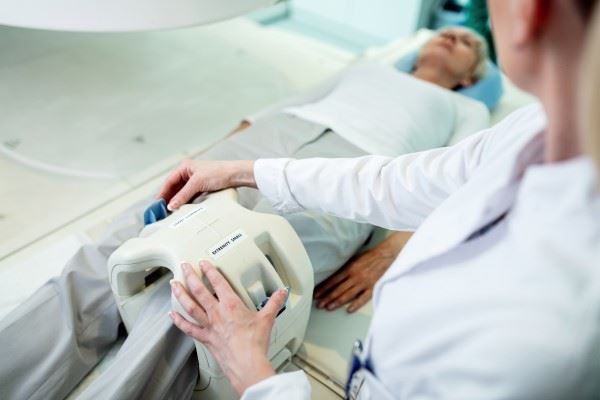-
Home
-
Understanding Magnetic Resonance Imaging of the Knee
Understanding Magnetic Resonance Imaging of the Knee
February 27, 2024
 Magnetic Resonance Imaging (MRI) is a type of diagnostic imaging that uses a strong magnetic field and radio waves to produce detailed images of the body. It is a non-invasive procedure that can help diagnose and manage various conditions, including knee injuries. In this article, we will discuss everything you need to know about MRI of the knee, including its benefits, how it is done, and what to expect during the procedure.
Magnetic Resonance Imaging (MRI) is a type of diagnostic imaging that uses a strong magnetic field and radio waves to produce detailed images of the body. It is a non-invasive procedure that can help diagnose and manage various conditions, including knee injuries. In this article, we will discuss everything you need to know about MRI of the knee, including its benefits, how it is done, and what to expect during the procedure.
What is Magnetic Resonance Imaging of the Knee?
MRI of the knee is a non-invasive diagnostic test that creates detailed images of your knee joint using a combination of strong magnetic fields and radio waves. MRI can show different structures in the knee, including ligaments, tendons, cartilage, and bones, helping doctors identify issues that may not be visible with other imaging techniques.
Clinical Applications of MRI in Knee Pathologies
MRI can help diagnose and manage a variety of different knee conditions. Some of the most common include ligament injuries, meniscal tears, cartilage defects, and osteoarthritis.
- Ligament Injuries: MRI is highly sensitive and specific in detecting ligament injuries, such as ACL tears, which are common in athletes and active individuals. MRI can accurately assess the extent and location of the tear, guiding surgical planning and postoperative management. MRI images can also help evaluate associated injuries, such as bone bruises or meniscal tears, which may influence treatment decisions.
- Meniscal Tears: Meniscal tears are among the most common knee injuries, often due to twisting or hyperextension of the knee. MRI is the imaging modality of choice for diagnosing meniscal tears, as it can differentiate between types of tears and assess the extent of the tear. This information is crucial for determining the appropriate treatment plan, whether conservative or surgical.
- Cartilage Defects: Cartilage defects, such as osteochondral lesions, can lead to pain, swelling, and reduced joint function. MRI can accurately depict cartilage integrity and identify focal defects or areas of cartilage thinning. This information is essential for determining the severity of cartilage damage and guiding treatment options, such as cartilage repair procedures or joint replacement surgery.
- Osteoarthritis: MRI plays a crucial role in the evaluation of osteoarthritis, providing detailed images of cartilage loss, osteophyte formation, subchondral bone changes, and synovial inflammation. MRI can assess disease progression and monitor the effectiveness of interventions, such as physical therapy or intra-articular injections, in managing osteoarthritis.
What are the Disadvantages of a Knee MRI?
While MRI is effective for diagnosing knee issues, it has drawbacks. The cost of the procedure can be high, and the procedure itself can last up to an hour. Some people find the MRI machine claustrophobic or uncomfortable due to loud noises.
Additionally, those with metal implants may not be able to undergo MRI, and contrast agents used in some cases can lead to rare allergic reactions. Despite these drawbacks, MRI is generally safe and provides valuable insights when diagnosing or managing knee problems.
How Long Does an MRI of the Knee Usually Take?
An MRI scan of the knee typically takes 30-60 minutes, depending on how many images need to be taken and how complex your case may be. During this time, patients will need to lie still on a table that slides into the MRI machine. The machine produces a cool sensation and loud noises during the scan.
What to Expect During the Procedure
Before the procedure, you will be asked to remove any metal objects, such as jewelry, watches, or hairpins. You may also be given an injection of contrast dye, depending on your case. During the procedure, you will lie still on a table that slides into the MRI machine. You may hear loud knocking or thumping noises during the scan, which is normal. Some people find these noises disturbing and may be given earplugs to reduce noise levels.
MRI is an important diagnostic tool that can help doctors identify and manage various knee conditions and injuries. It is a non-invasive procedure that produces detailed images of knee structures using strong magnetic fields and radio waves. If you are experiencing knee pain or other symptoms related to your knee joint, talk to your referring physician about whether an MRI scan could be beneficial for you.